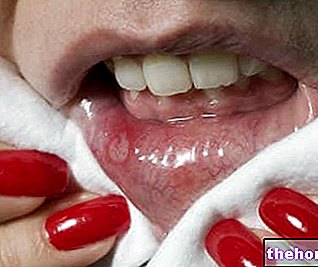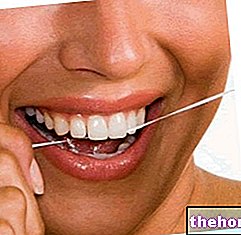Important premise
Being a full-fledged pharmacological preparation, chlorhexidine-based mouthwashes must be used correctly, fully respecting the doses prescribed / recommended by the doctor and the duration of the treatment.

Mouthwashes with chlorhexidine (0.2%) are widely used in the prevention of dental infections after dental surgery (eg dental extraction, apicoectomy) and in the treatment of gingivitis and other types of inflammation in the oral cavity. At lower concentrations, chlorhexidine mouthwashes (0.05%) can be used to combat halitosis, including its pathological form.
Although not requiring a medical prescription, the use of chlorhexidine mouthwashes should always be done with the advice of a doctor or an expert in the field. An excessive dosage of drug (taken in the form of oral rinses) or a duration of therapy unsuitable for your own the disorder could in fact involve risks and even serious side effects.
Null effect and common disturbances
As we have seen, it is important to know the correct way to use the mouthwash to make the most of its therapeutic efficacy, avoiding unpleasant side effects.
Although it is the doctor's duty to educate the patient on the ideal way to use the drug, we briefly recall the main guidelines.
First of all, it is necessary to know that chlorhexidine is sensitive to some ingredients commonly present in the preparation of toothpastes (sodium lauryl sulfate and sodium monofluorophosphate). Having said this, it is understood that the concomitant use of generic toothpastes and chlorhexidine mouthwash could alter or, worse still, render the therapeutic effect of the drug null. To avoid frustrating the treatment, it is recommended to use a toothbrush and toothpaste only 30 minutes / two hours after rinsing with medicated mouthwash (alternatively, use compatible toothpastes for association with anti-plaque solutions with chlorhexidine).
Furthermore, to avoid damaging the color of the dental enamel, rinses with chlorhexidine mouthwash should not be performed more than twice during the 24 hours: for this purpose, we recommend a gargle in the morning, after breakfast, and one in the morning. evening before night rest.
Another very important element is the way of use some mouthwash. After a dental procedure, mouthwash rinses should always be done with some gentleness, to avoid unstitching the stitches. Otherwise, in the case of gingivitis, rinsing should be more vigorous.
Stains on the teeth
When used in the right doses and in an adequate way, the chlorhexidine mouthwash does not create any harm. Often, however, patients tend to abuse the drug, in the "mistaken belief that" the mouthwash does not hurt because it should not be ingested. "In fact, when used regularly more than twice a day and for more than 3 weeks consecutive, medicated mouthwash can create unpleasant stains in the teeth: in particular, such behavior tends to alter the natural color of tooth capsules and resins used for dental fillings, which tend to take on a variable shade from yellow to black.
Although not harmful to the integrity of the tooth, these stains are clearly very unsightly, and give the smile an unpleasant and unhealthy appearance. In this case, the alteration of the color of the teeth is essentially due to a "hyperpigmentation of tartar and bacterial plaque stuck to the surface of the teeth.
The only solution to remove stains from teeth is professional dental cleaning: through scaling the teeth will be able to return shiny and brilliant.
To minimize the risk of yellow or black-stained teeth, new pharmacological formulations have been developed containing chlorhexidine and other specific ingredients, specially selected not to stain the teeth.
Burning of the oral cavity
Prolonged and excessive use of chlorhexidine-based mouthwashes can cause severe burning of the oral cavity, bacterial resistance and inflammation of the mucous membranes. In such situations, the advice is to contact your dentist immediately to intervene as soon as possible in solving the problem.
Normally, when chlorhexidine mouthwashes cause severe burning in the mucous membranes of the oral cavity, the most appropriate remedy is to immediately stop the treatment, and apply a specific paste formulated with soothing and healing substances (e.g. aloe) and tissue regenerating substances (e.g. aloe) to the irritated gums. . hyaluronic acid).
Alteration of taste
It is not uncommon that, after gargling with chlorhexidine mouthwash, the perception of the taste of food is distorted or reduced. This side effect, technically known as dysgeusia, it is quite common in patients using this drug. In any case, by interrupting the treatment with chlorhexidine mouthwash rinses, the perception of the taste of food will soon be restored.
Other articles on "Chlorhexidine mouthwashes: risks and side effects"
- Chlorhexidine mouthwash
- Chlorhexidine




























